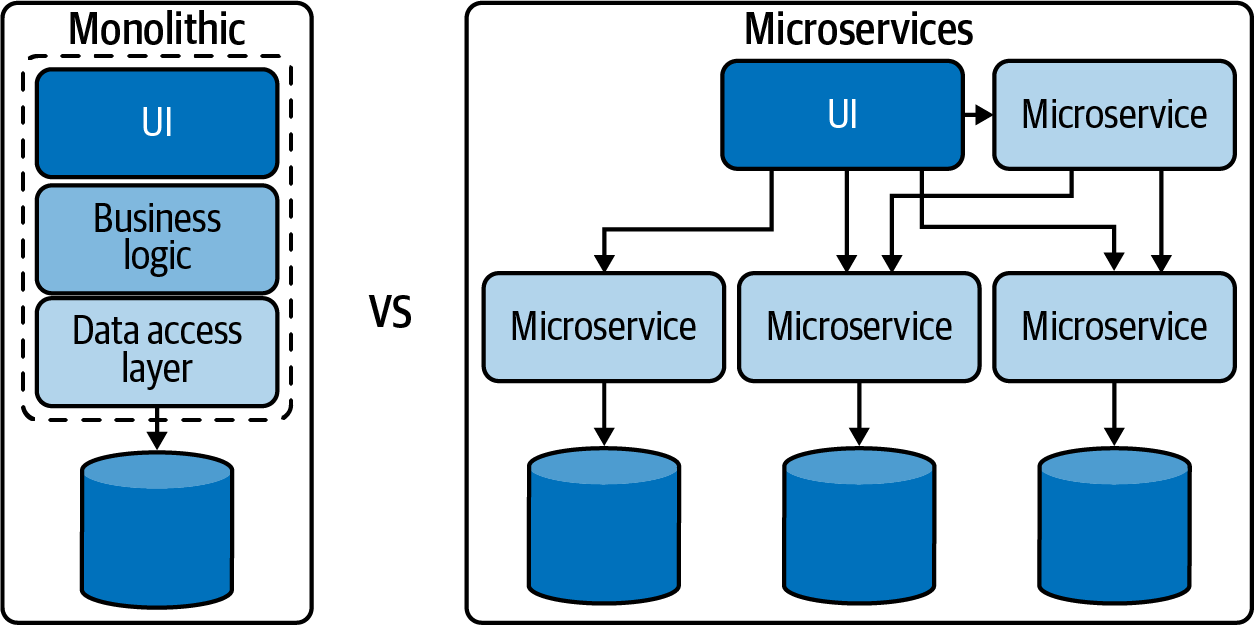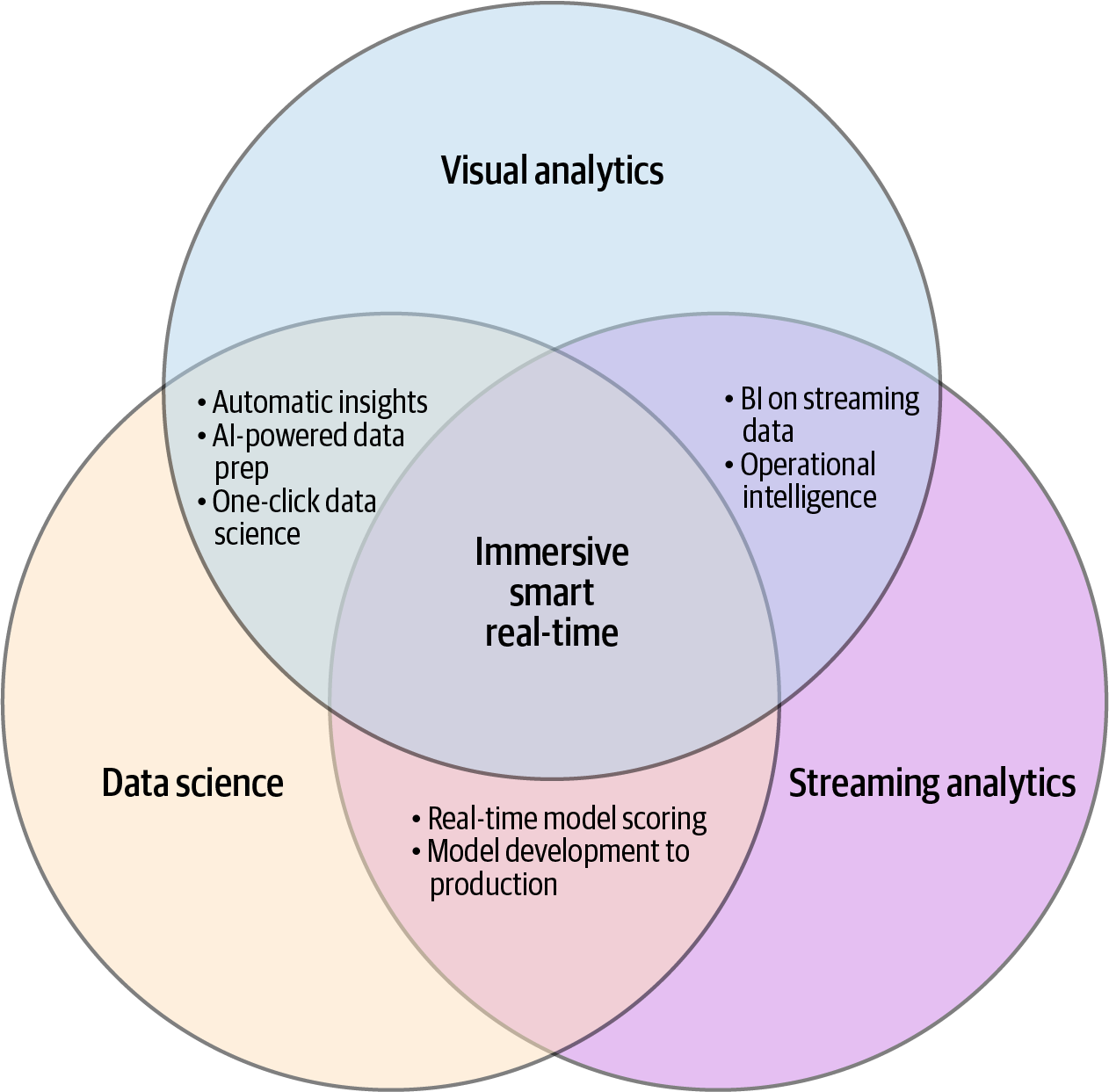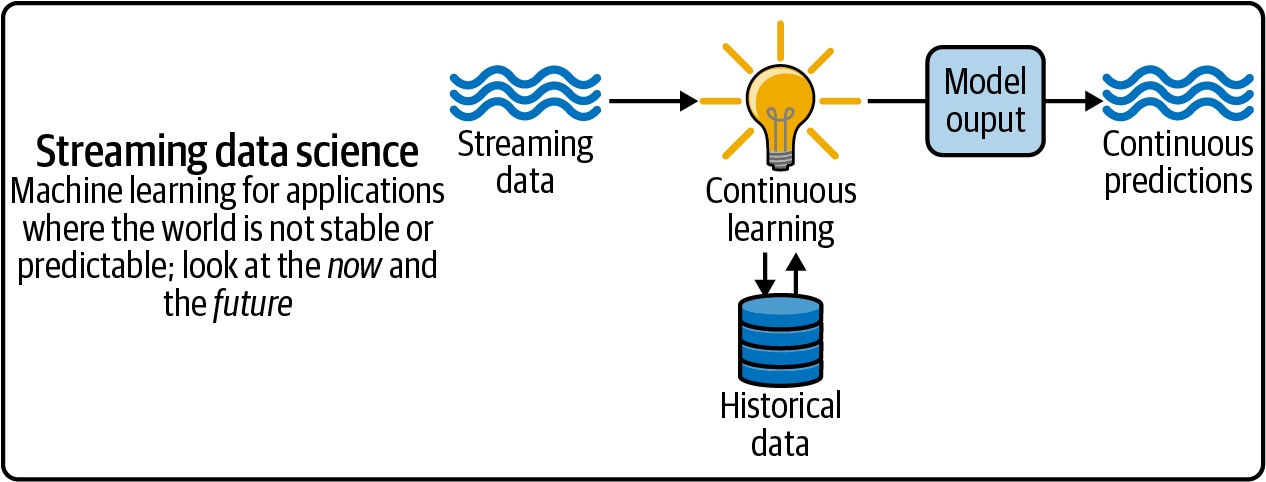Chapter 3. The Future of Analytics Is Converged
Converged analytics unifies advances in AI, streaming data, and related technologies into a seamless analytics experience for all users. This arrangement unlocks prescriptive analytics across an organization, allowing anyone to make data-driven decisions that answer important questions. Chapter 1 provided real-life examples of converged analytics in action; here, we’ll examine the alignment of people, processes, tools, and data to get there.
People
As we saw in Chapter 2, statisticians and IT served information to business users at the inception of a wider analytics adoption; further into maturity, data analysts and scientists built systems where business users could self-serve insights. In a converged architecture, not only is the business user at the center, but their decision making is augmented by automation.
Given this arrangement, there is more collaboration, more automation, and greater scale for data-driven insights as a result of the convergence of teams and workstreams. Teams can work cross-functionally and in parallel across different domains iterating the system to their needs with the raw time and human resources needed to create and maintain analytics products such as dashboards and models.
Processes
While perhaps using different means, the ends of older analytics approaches were the same: insights, whether historic or in support of future decisions, using governed data and processes. In the methods for doing so, however, infrastructure tended to bloat, either from fragile data storage jobs or increasingly complex data pipelines.
Given the volume, velocity, and variety of data needed for prescriptive analytics, such monolithic, centralized approaches are less than optimal. Using the tools discussed in the next section, a converged architecture offers a more nimble approach for providing the right insights at the right time to users of all technical levels.
Such democratization relies on quick deployment and adjustment of data products; optimizing production, for example, requires bringing more machine learning models to production faster and at scale. The practice of ModelOps is used to institute and govern such rapid production. These processes have become a necessity in rapidly changing business conditions; for example, as the COVID-19 pandemic made structural changes to the economy, many models lost their predictive edge in the face of fundamentally different data.
Tools
If maintaining legacy analytics is like raising a thoroughbred, then developing converged analytics is like cultivating a school of goldfish.1 That is, the backend provisioning is no longer served by monolithic systems but rather by composable groups of microservices. This arrangement supports elastic and scalable analytics; composability makes it easier to adapt to changes driven in part by a growing volume and variety of data sources.
Figure 3-1 compares a monolithic architecture versus microservices.

Figure 3-1. A monolithic architecture versus microservices
In previous analytics approaches, the distinction between backward-facing BI and prediction-focused data science was clear. Under convergence, analytics at the edge is possible—automating analytic computations so they can be performed on noncentralized data generated by sensors, switches, and similar.
With converged analytics, individuals no longer need to wait for data science teams to provide ad hoc deeper insights. They have all the data-driven insights at their fingertips, assisted by AI to quickly explore and make decisions. This isn’t just the case for back-office analysts: frontline workers can, for example, adjust how they interact with a customer given data retrieved about that customer at the time of that interaction.
Figure 3-2 depicts the combination of traditional data science with streaming and visual analytics to enable predictive analytics.

Figure 3-2. Converged analytics as predictive analytics
Data
A primary feature of converged analytics, as discussed previously, is the blending of historical and real-time data. According to a study by Seagate and International Data Corporation (IDC), 30% of all data will be real time by 2025.2 In particular, IoT sensor readings, GPS signals, and online transactions as they happen are available for immediate analysis and modeling. Figure 3-3 depicts how streaming data, combined with historical data, can be used to drive continuous model deployment and prediction.

Figure 3-3. Streaming data and continuous learning
Converged Analytics and Agility
Earlier analytics tended to isolate skills and processes: technical versus highly technical roles, data collection versus deployment versus modeling, and so forth. Converged analytics promotes close collaboration between teams to rapidly model, deploy, and act on data. As data operations become decentralized, teams and individuals can rapidly mine and act on the analytics.
In particular, the marriage of real-time data with machine learning and AI-infused BI allows any user to magnify their own domain knowledge with data-driven insights. These features square precisely with the definition of business agility presented in Chapter 2 as “innovation via collaboration to be able to anticipate challenges and opportunities before they occur.” With the support of converged analytics, any professional can detect and act on both challenges and opportunities at the moment of impact, rather than months later.
But as you saw in Chapter 2, there are plenty of antecedents for getting to converged analytics. Where are you on that journey? In the following chapter, you’ll learn how to self-assess your current analytics maturity using the familiar framework of people, processes, tools, and data; then, in the chapter after that, you’ll pick up concrete next steps toward adopting converged analytics.
1 Karoly Bozan, Kalle Lyytinen, and Gregory Rose, “Software Architecture and Outsourcing Governance: Raising Thoroughbreds Versus Cultivating Schools of Goldfish,” in Information Systems Outsourcing, ed. Rudy Hirschheim et al. (Cham: Springer, 2020), 23–41.
2 “Rethink Data: A Seagate Report,” Seagate, accessed August 3, 2021.
